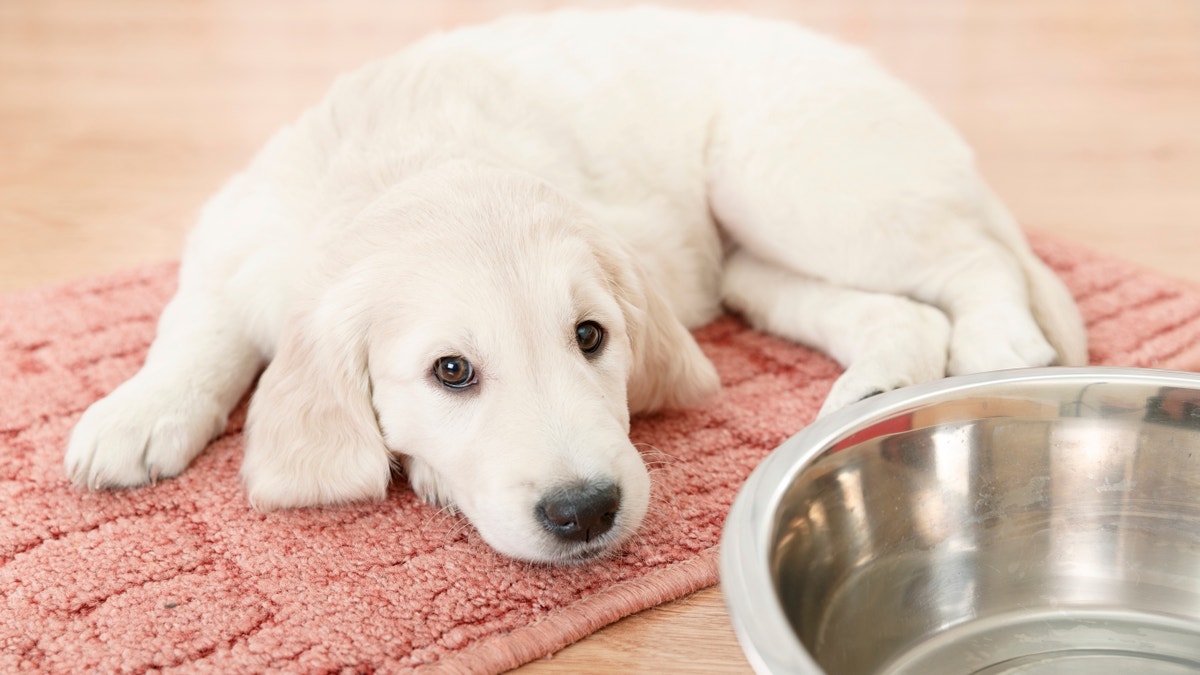
golden retriever puppy lying down near empty feeding bowl (IuriiSokolov)
With pet obesity on the rise, it’s more important than ever to zero in on a diet that will keep your fur baby healthy. But the world of animal nutrition can be tricky to navigate. We got the latest scoop on what you should and shouldn’t be feeding your cat or dog.
You're cutting your overweight pet's calories too much
If your pet is overweight, your first instinct may be to cut back on your his or her food, but shrinking its meals too much could lead to malnutrition or deficiencies, cautions Cailin Heinze, a board-certified veterinary nutritionist and assistant professor of nutrition at the Cummings School of Veterinary Medicine at Tufts University. Try feeding Fluffy a little less, but no lower than 75 percent of what the bag recommends for her ideal weight. If your pet still isn't shedding pounds, you can try a reduced-calorie food, but be wary. "Just because the name or package implies it's for overweight pets doesn't mean that it's lower in calories than what you're already feeding," explains Heinze. And, of course, ask your vet about your little guy's individual requirements.
RELATED: 4 Ways Pets Help Relieve Stress
You're considering giving your pet supplements
“If you’re providing a complete and balanced diet, there’s no reason for supplements unless your pet has specific medical needs,” says Julie Churchill, DVM, associate professor of nutrition at the University of Minnesota College of Veterinary Medicine. Even then, you’ll want to work with your vet to make sure you’re not overloading your animal’s intake of a certain nutrient.
You're feeding your dog an all-raw diet
“There is no known health benefit to this type of diet, and there may even be potential health risks,” says Dr. Churchill. Because you’re handling raw meat, you run the risk of bacteria contamination that can make the human members of your household sick, along with your pet. In fact, a 2012 study by the FDA Center for Veterinary Medicine that looked at 1,000 samples of pet food found that packaged raw pet food was the most likely to be contaminated with disease-causing bacteria. “If pet parents are insistent on feeding raw, I try to steer them toward raw pet foods that have undergone high-pressure pasteurization to decrease the risk of pathogenic bacteria,” says Dr. Churchill.
RELATED: 11 Creative Ways to Sweat With Your Dog
You're giving your pet unhealthy "people food"
When vets say, “You shouldn’t feed table food,” that’s generally to discourage people from letting their dog or cat lick their plate or have dinner scraps. “If you’re feeding your pet a commercial diet for 90 percent of its calories, then instead of buying commercial treats, use that other 10 percent to offer fruits and vegetables, such as cucumbers or apples, and even lean meats,” advises Heinze. This lets you dole out a lot of indulgences for very few calories.
